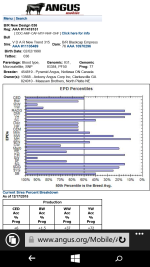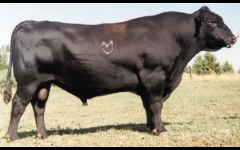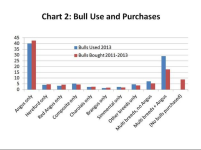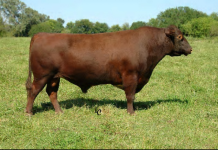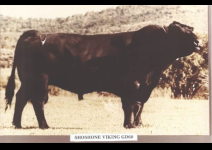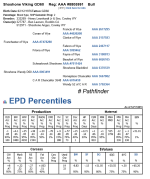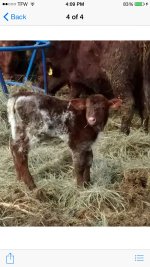J
JTM
Guest
I hear what you are saying but just can't agree that it's best for the breed. Angus has gone away from maternal. They are wondering, they have feed conversion issues, hoof issues, and will have other issues if they keep pushing the growth deal. I do agree with you that there are Angus cattle that do a lot of things really well but I'm not sure that going down that road is what we as a breed should do. I'm not saying don't conform, I'm saying we should give them things they don't have and things they know they will need. Things they won't get from crossing with other breeds. With my experience with cattle I would never assume that any program has convenience traits bred in. I agree with the two you mentioned and there are a handful of others. So once you get convenience traits, to me the next step is balanced carcass traits for a maternal breed.E3 Durhams said:JTM said:I am perfectly fine with the stance I have taken. I will make sure my Shorthorn cattle excel in convenience traits first. My point in saying this is because if you don't focus on convenience traits first, they won't have them. Growth, stoutness, and eye appeal are antagonistic to convenience traits, good udders, fertility, hoof quality, calf vigor, and every other trait that ranchers want. Commercial cattlemen want live calves that are healthy. They don't want risk and that is what you will give them when you try to breed for high growth. I never mentioned what breeds to cross them with, you assumed Angus and yes that is one option. As we cross breed we should be taking into account ribeye per 100 lb. and IMF. Make sure that the cattle are in the acceptable areas for Ribeye and have good marbling in order to get the balance of carcass traits. Once again I agree with Librarian, we need to create a market for bulls that will create the crossbred cows that Commercial cattlemen want and give them the crossbred calves that will make them the most profit. Profit to a commercial rancher isn't all wrapped up in pounds. The old saying "we sell them by the pound" is a good way to go out of business.E3 Durhams said:So we need to focus on convienience traits but not growth and carcass? We can use angus to attain that?
No no no no. Just no. A cow that's easy keeping with good udder, temperament and all that jazz but has calves with mediocre WW and YW and little ribeyes is useless to me. I think it must all be selected for. The less days on feed the more money I make. Good growing, carcass Bulls on angus cows should improve the resulting animal all around. Not just convienience traits.
If you really want to know how your cattle stack up, you must prove a bull first that is a high ACC bull already. Prove him with other like minded breeders. Once that's done you'll have a much better baseline to truly see where your cattle stand. It's going to be a long process.
I was actually referring to librarian when she said to use angus for carcass and growth. I believe I misunderstood her reading her response. Convienience traits to me should be in any breed or successful line of cattle. At this point it shouldn't need to be bred in if you have selected the correct stock to begin with. Kaper cattle are already there. Muridale is there. The list goes on. Shorthorns need to gather attention to me. But for once in a positive way. The Top Hand bull should be used heavily by all. We need good mommas that raise heavy calves with good carcass and do it on minimums. I see plenty of angus that are hitting this target already. If you can't at least breed similarly to the top breed, the commercial guy will see no reason to try an unproven breed basically. We need the shock and awe at this point I think. 550 pound ww east of the Mississippi in the angus breed gets your nuts cut off and a trip to the feedlot.

